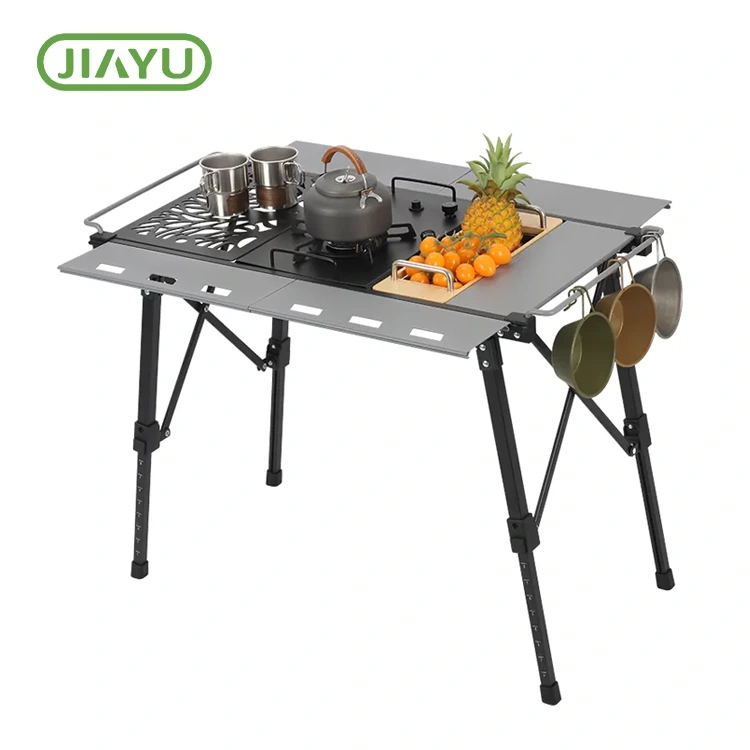
Camping tables are really practical. When we don't go camping, we can put them on the balcony at home. Occasionally, when guests come, it is very convenient to make tea on them. Then when we go camping, we can fold them up and put them in the trunk of the car to take to camping. When we unfold them on the grass, we can barbecue on them, or put the fruits and delicacies we brought on them to enjoy the food. So how should we choose a suitable camping table, and what should we pay attention to?

When choosing a camping table, we should choose a table that is light in weight and occupies little space after folding, because our vehicle space is limited and it is too heavy to carry.
A parameter that is easily overlooked but directly affects the user experience. If the height of the table is less than 50cm, it is considered low, and about 65-70cm is very suitable. The height of our standard dining table is 75cm, and the height of the knees of adults sitting down is generally close to 50cm. It is very important that the height of the camping table must match the height of the camping chair, otherwise it will be too uncomfortable. For example, a 50cm high camping table is more suitable for a camping chair with a seat cushion less than 40cm above the ground, otherwise the chair is too high and it is uncomfortable to bend over all the time.
Stability is usually inversely proportional to portability. When the materials are basically the same, the more stable the structure is, the heavier it is. Generally speaking, it is enough for an outdoor camping table to bear a load of more than 30kg. Who would put heavier items on the table for no reason? But stability is very important. It would be bad if the table collapsed halfway through cooking hot pot.
In fact, it is basically the same as stability. Here we mainly consider materials and connectors. The quality of materials directly affects the service life of the camping table.